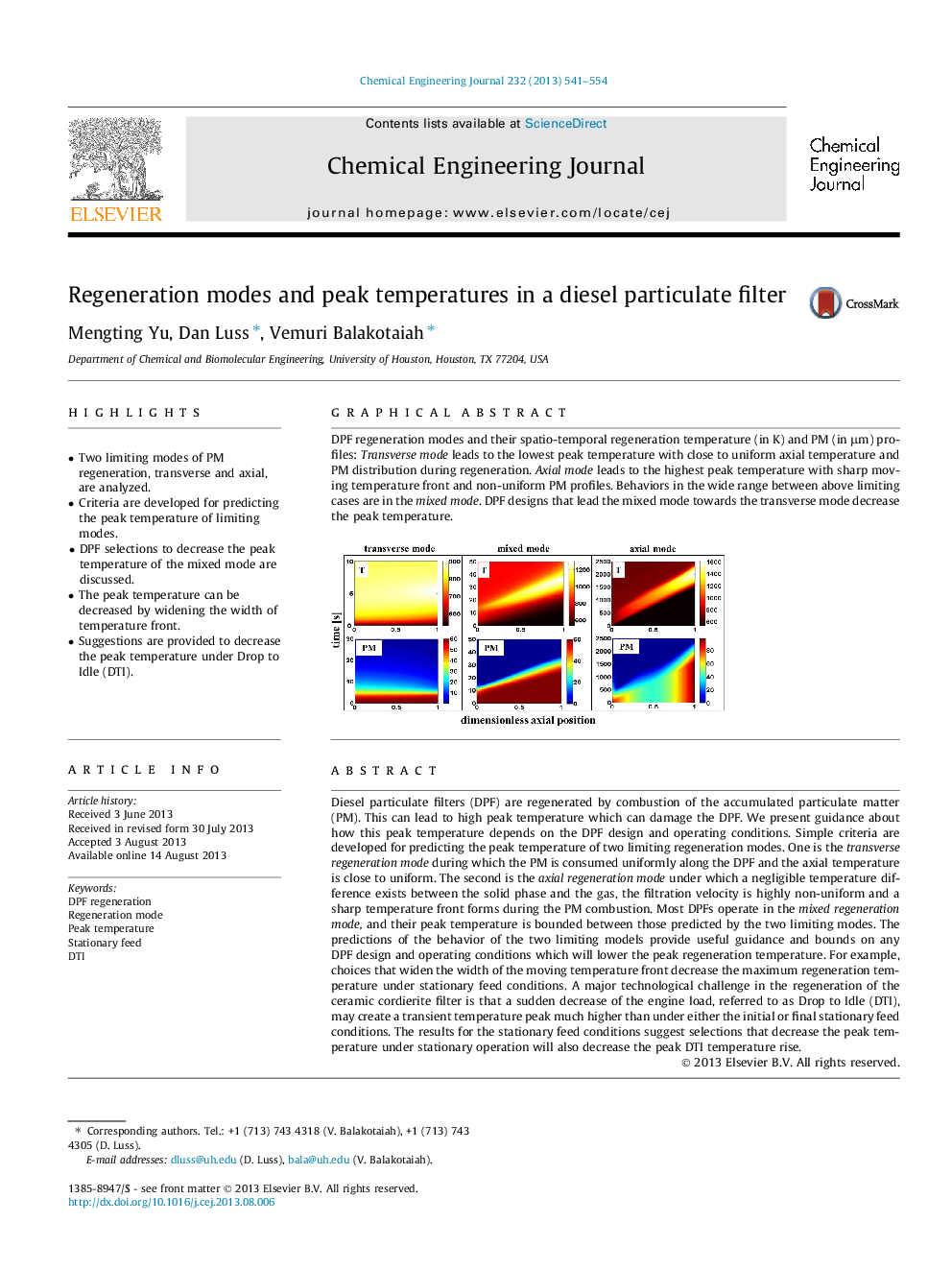| کد مقاله | کد نشریه | سال انتشار | مقاله انگلیسی | نسخه تمام متن |
|---|---|---|---|---|
| 148178 | 456406 | 2013 | 14 صفحه PDF | دانلود رایگان |

Diesel particulate filters (DPF) are regenerated by combustion of the accumulated particulate matter (PM). This can lead to high peak temperature which can damage the DPF. We present guidance about how this peak temperature depends on the DPF design and operating conditions. Simple criteria are developed for predicting the peak temperature of two limiting regeneration modes. One is the transverse regeneration mode during which the PM is consumed uniformly along the DPF and the axial temperature is close to uniform. The second is the axial regeneration mode under which a negligible temperature difference exists between the solid phase and the gas, the filtration velocity is highly non-uniform and a sharp temperature front forms during the PM combustion. Most DPFs operate in the mixed regeneration mode, and their peak temperature is bounded between those predicted by the two limiting modes. The predictions of the behavior of the two limiting models provide useful guidance and bounds on any DPF design and operating conditions which will lower the peak regeneration temperature. For example, choices that widen the width of the moving temperature front decrease the maximum regeneration temperature under stationary feed conditions. A major technological challenge in the regeneration of the ceramic cordierite filter is that a sudden decrease of the engine load, referred to as Drop to Idle (DTI), may create a transient temperature peak much higher than under either the initial or final stationary feed conditions. The results for the stationary feed conditions suggest selections that decrease the peak temperature under stationary operation will also decrease the peak DTI temperature rise.
DPF regeneration modes and their spatio-temporal regeneration temperature (in K) and PM (in μm) profiles: Transverse mode leads to the lowest peak temperature with close to uniform axial temperature and PM distribution during regeneration. Axial mode leads to the highest peak temperature with sharp moving temperature front and non-uniform PM profiles. Behaviors in the wide range between above limiting cases are in the mixed mode. DPF designs that lead the mixed mode towards the transverse mode decrease the peak temperature.Figure optionsDownload as PowerPoint slideHighlights
• Two limiting modes of PM regeneration, transverse and axial, are analyzed.
• Criteria are developed for predicting the peak temperature of limiting modes.
• DPF selections to decrease the peak temperature of the mixed mode are discussed.
• The peak temperature can be decreased by widening the width of temperature front.
• Suggestions are provided to decrease the peak temperature under Drop to Idle (DTI).
Journal: Chemical Engineering Journal - Volume 232, October 2013, Pages 541–554